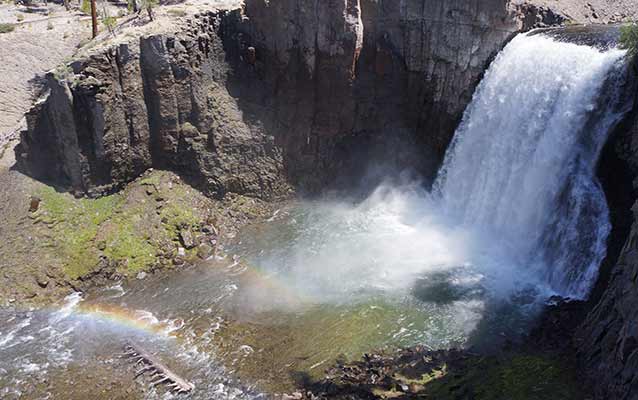Last updated: June 19, 2015
Lesson Plan
Exploring Climate Science: Watersheds

- Grade Level:
- Upper Elementary: Third Grade through Fifth Grade
- Subject:
- Science
- Lesson Duration:
- 60 Minutes
- Common Core Standards:
- 5.RI.7, 5.RI.9, 5.W.8, 5.W.9
- Additional Standards:
- Next Generation Science Standards: 5-ESS2-2, 5-ESS3-1
- Thinking Skills:
- Remembering: Recalling or recognizing information ideas, and principles. Understanding: Understand the main idea of material heard, viewed, or read. Interpret or summarize the ideas in own words. Applying: Apply an abstract idea in a concrete situation to solve a problem or relate it to a prior experience.
Objective
In “Exploring Climate Science (Watersheds),” students will explore the local watershed to learn how communities, the region, and state are connected by water. The students will be able to:
1. State the watershed(s) in the area and explain why it is important.
2. Show how the watershed connects their town to others in the area/region
Background
Water is essential for life on Earth. Relative water availability is a major factor in designating habitats for different living organisms. In the United States, things like agriculture and water rights are hot topics. Current models predict that average global temperatures are going to continue to rise even if regional climate changes remain complex and varied. These changes will have an impact on all of Earth's systems.
Studies have shown that climate change is driven not only by natural effects but also by human activities. Knowledge of the factors that affect climate, coupled with responsible management of natural resources, are required for sustaining these Earth systems. Long-term change can be anticipated using science-based predictive models, making science and engineering essential to understanding global climate change and its possible impacts.
National Parks can serve as benchmarks for climate science trends and effects over time because they are protected areas void of human influence. Understanding current climate trends will help set students up to be successful in interpreting and engaging in discussions about climate change, which will lead to informed decision making.
Preparation
Make one copy of the teacher materials: Procedure 5.1: The Power of Water.
Make student copies of Worksheet 5.1: Map of San Joaquin Watershed and Procedure 5.2: Watershed Activity. (See Materials Section)
Make sure you have a computer with internet and a projector for displaying the interactive online watershed map.
Gather and prepare the following supplies/materials:
-
Sandbox, pitcher of water, 1-2 large ice cubes
-
Interactive online watershed map: http://www.arcgis.com/apps/OnePane/basicviewer/index.html?appid=387531ac0c094da5b6139b890958fca6
- Colored pencils, crayons, or thin-tip markers for tracking watershed
Materials
This procedure explains how to set up the Power of Water activity to demonstrate watersheds.
Download Teacher Resource: Procedure 5.1: The Power of Water
Students will use this map to trace important watersheds in the area.
Download Worksheet 5.1: Map of San Joaquin Watershed
This will explain how to mark watershed maps.
Download Procedure 5.2: Watershed Activity.
Lesson Hook/Preview
Demonstrate the power of water using a sandbox, water, and ice cubes. See procedure 5.1. (Materials Section)
Procedure
-
The snow that accumulates up in the mountains eventually melts and flows into the local watershed. Trace several local watersheds on interactive online map to show students where water ends up (see materials and resources section for the link).
-
What would happen if the precipitation that normally falls as snow was rain instead?
-
Snow is a natural water reservoir. As long as temperatures remain cold, the snow will stay and release slowly over time.
-
The slow release does more for the steam flow than a large runoff event happening all at once.
3. Trace watershed from Thousand Island Lake and Owens River using worksheet 5.1. Have students follow along marking on their own maps. See procedure 5.2 for a model of how students should mark the maps.
Vocabulary
-
Precipitation—any product of condensation of atmospheric water vapor that falls under gravity.
-
Stream flow—the flow of water in streams and rivers often from snowpack runoff.
- Watershed – an area of land where all of the water that is under it or drains off of it goes into the same place.
Assessment Materials
Discussion: Describe the ways in which snow can impact the watershed.
Related Lessons or Education Materials
Day 1- Earth as a System
Day 2- Weather vs Climate
Day 3- Watershed
Day 4- Climate Science Data and Tools
Day 5- Field Trip
Day 6- NPS Connections
Day 7- Project Preparation
Day 8- Evaluations
